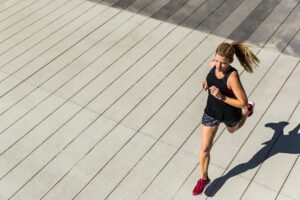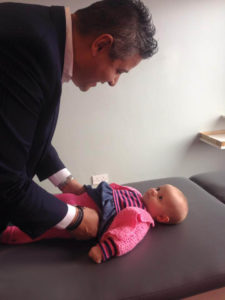You can’t beat good old-fashioned walking to help feel great and get into shape! Whether enjoying the wonder of nature, the company of a friend or walking to de-stress, walking can be a healthy, invigorating experience. And thanks to its convenience and simplicity, walking just might be right for you, too!
Benefits of Walking
You don’t need to become a member of an expensive gym to go walking. And except for a good pair of walking shoes, it requires virtually no equipment.
A sedentary lifestyle has a devastating influence on people’s health as they age, therefore exercise is imperative. Walking:
- Improves cardiovascular endurance
- Tones muscles of the lower body
- Burns calories: about 80 if walking 2 miles per hour, and about 107 if walking 4.5 miles per hour
- Reduces risk of heart disease
Selecting Shoes
The first item of business when beginning your walking program is to select the right pair of shoes. Don’t choose fashion over function when purchasing running shoes, not realizing that poor-fitting shoes can do more than hurt their stride; they can also lead to pain throughout the body.
- Make sure the shoes you purchase fit properly. The balls of your feet should rest exactly at the point where the toe end of the shoe bends during walking.
- Select shoes with plenty of cushioning in the soles to absorb the impact.
- Shop for sneakers at the end of the day or after a workout when your feet are generally at their largest. Wear the type of socks you usually wear during exercise.
- When trying on shoes, be sure to wear them for at least 10 minutes at the store.
Getting Started
Walking just 12 minutes every second day can offer important health benefits. But in order to increase your longevity, try to eventually work up to 30 minutes, five days per week. Experts generally agree that to be considered “active,” adults should try to take 10,000 steps each day. Wearing a pedometer is an easy way to track your progress!
The following tips can help you get started on your walking regimen:
- Move your arms freely, in coordination with the opposite leg.
- Don’t stoop your head or look down as you walk. This will challenge the normal forward curve of your neck, which, in turn, will cause you to carry your weight improperly.
- Don’t carry weights or dumbbells while walking. They’re better used as a separate part of your exercise regimen.
- Expect a little soreness in the thighs and calves for the first week or two. If you experience more than soreness, check with Dr Ben.
- Walk briskly, with “purpose.” Simply strolling, while relaxing and enjoyable, is not an effective form of cardiovascular exercise.
Of course, be sure to consult Dr Ben before beginning any exercise program – he will help you with ideas, stretches and exercises.
Pain and Injury
While you may experience pain or injury in a particular area, such as a knee or a hip, the root of the problem may lie somewhere else. Injuries of this nature are not regional, or isolated, but systemic. A problem in the foot or ankle can create an imbalance in every step, leading to discomfort or injury that moves to the knees, hips, low back, or elsewhere.
If you suffer from pain beyond typical muscle soreness, your doctor of chiropractic can diagnose and treat your pain or injury and get you back into the swing of your walking routine. Dr. Ben can also help customize a wellness program that is right for you and has the expertise to help keep you in the mainstream of life.
To book an appointment with Dr Ben and the team at Optimal Chiropractic in Ballincollig, please just give Mary a call on 021 487 8465












